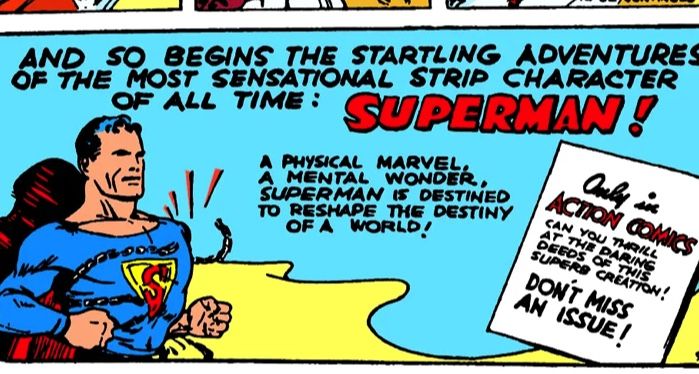
First Appearance Flashback: Superman
Superheroes have been around a long time, and most of the characters and genre conventions are pretty well established. But did every character always look and act the way we expect them to today? In this series, I’ll be looking at the first appearances of iconic superheroes to see what’s familiar, what’s fallen by the wayside, and what’s goofy as heck. First up: Superman!
Superman debuted in Action Comics #1 (June 1938) in a story by Jerry Siegel and Joe Shuster. He’s generally considered the first comic book superhero, so there was no set formula for how this kind of character should behave. Let’s take a look at what would someday birth a new, billion dollar genre.
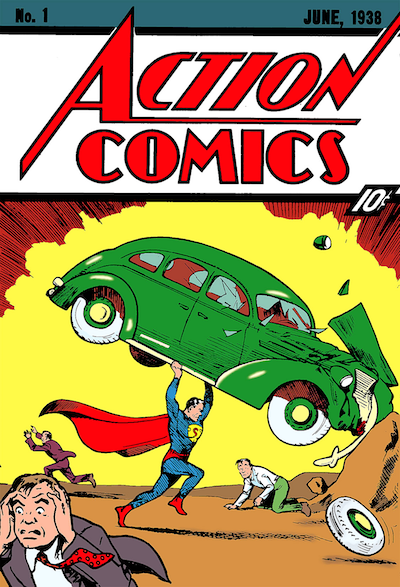
Superman, no! Don’t smash that car, it’s vintage! My favorite thing about this cover by a country mile is the guy on the bottom left. He has stared into the void and the void was wearing tights and a cape.
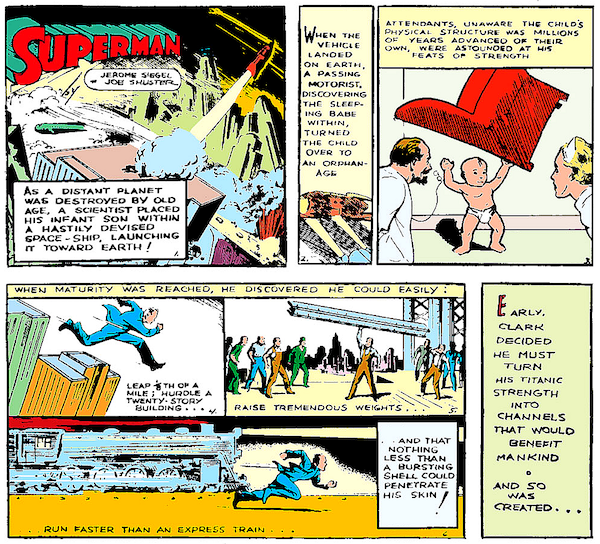
The first page gives us a very succinct origin story for Superman, which is actually pretty unusual for this era, which often just dropped the reader in in media res. Superman hails from “a distant planet destroyed by old age,” which is a concept both baffling and concerning. It’s not yet called Krypton and there’s no mention of Jor-El, much less kryptonite, which wouldn’t make its first appearance until the radio show a few years later.
There are also no Kents yet: we learn that “a passing motorist” found a baby in a rocket and handed it over to an orphanage, which is just wild. Buddy. THAT BABY WAS IN A ROCKET. Do you not have any follow-up questions???
Baby Clark’s little “raise the roof” pose in that third panel never fails to make me laugh.
The first page goes on to tell us that Clark can “leap an eighth of a mile,” “run faster than an express train,” and “that nothing less than a bursting shell can penetrate his skin,” so the powers are significantly downplayed from what they would someday become. We also learn that ants and grasshoppers can do this so it all checks out, scientifically. We’re learning a lot!
We finally get that “in media res” on the next page, with Superman running through the night, holding a bound and gagged blonde. He arrives at the governor’s mansion, where we meet my second favorite character after Traumatized Cover Man, Overly Protective Nightcap-Wearing Butler.
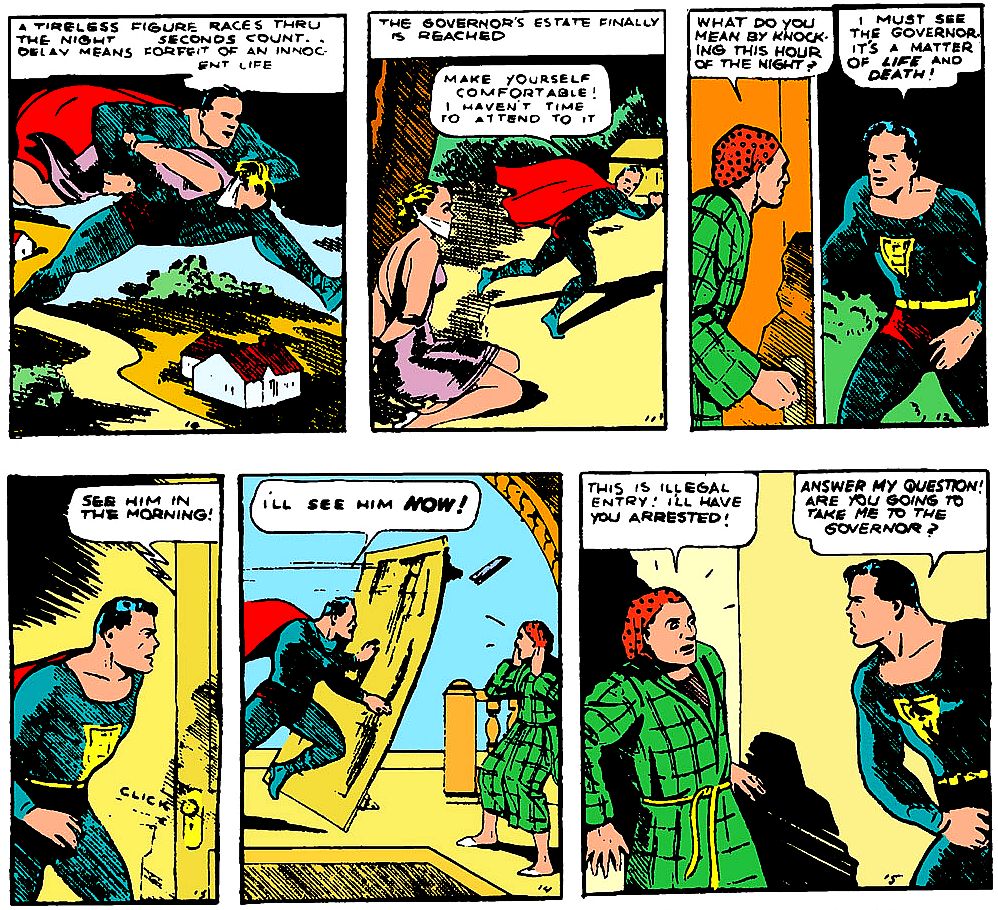
Turns out that an innocent woman is about to be executed, but Superman has caught the real murderer (the blonde) and needs the governor to wake up and call in a stay of execution to the prison while they get things sorted out. He breaks through the inexplicably steel door to the governor’s bedroom and shakes off a bullet fired by OPNWB, showing off his powers. The governor looks at the signed confession Superman has brought from the real murderer and calls the prison, and an innocent life is saved!
And…that’s it. Who was murdered? Why? Why do they have the wrong woman? Who cares, time to catch up with an extra-handsome Clark Kent at his job at the Daily Star (not the Daily Planet yet!), where his non–Perry White editor tells him to find out more about Superman.
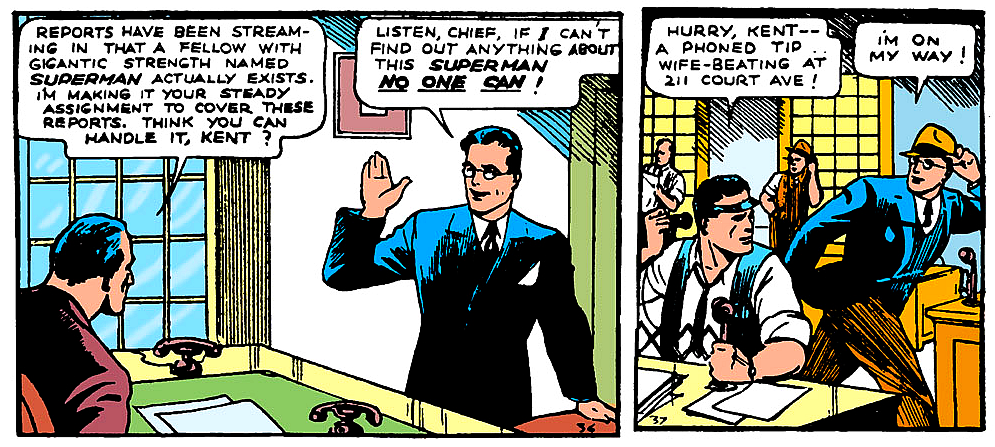
Clark is distracted, however, by someone calling to report a case of domestic abuse…to a newspaper, for some reason. Switching to Superman, he knocks the abusive husband around a bit, which, let’s be real, is extremely satisfying to watch.
Back at the office, we meet the other iconic character debuting in this issue: Lois Lane! Clark asks her out but then proceeds to spend their date whining about how she doesn’t like him. Note to men: this is not a good move.
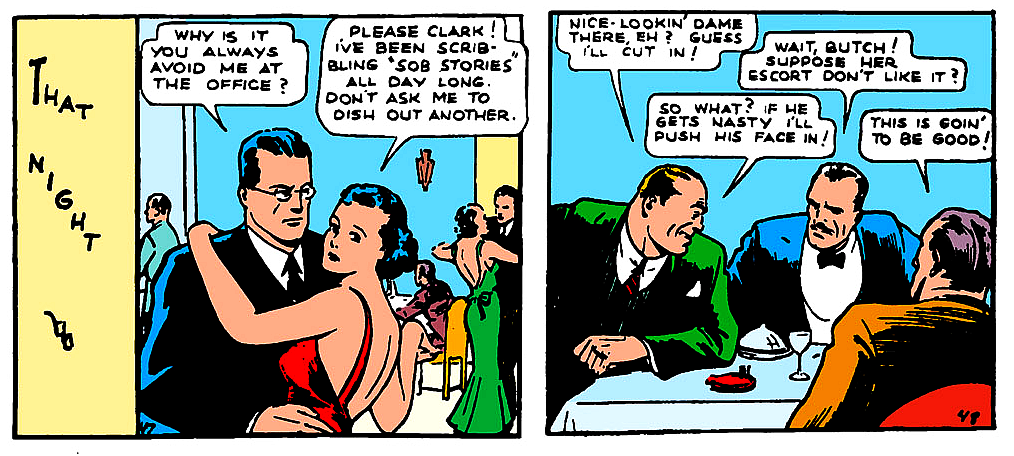
When a gangster-ish type named Butch Matson tries to cut in, Clark plays up his pushover persona, encouraging Lois to dance with Butch and get it over with.

Lois slaps Butch, reads Clark the riot act, and storms out, because she is the queen. I’ve seen this scene misinterpreted a lot, so I just want to note that Lois isn’t comparing Clark unfavorably to Superman here — she’s never met Superman. She’s just asking him to back her up when she stands up for herself, while he’s encouraging her to allow herself to be sexually harassed by a violent creep because it would be easier for him. So no, this isn’t a “poor Clark” situation — this is a “hell yeah, Lois, you tell him” because he deserves the dressing-down he’s getting.
Of course, Lois is promptly kidnapped by Butch and his gang, because this is a comic book. Superman catches up with the car and, hilariously, shakes everyone out of the windows like he’s trying to find his keys at the bottom of a disorganized purse:

(I think he catches Lois before she breaks her neck? Who knows.)
The car is smashed, Butch is left dangling from a telephone pole, and Lois is returned to the as-yet-unnamed city they live in, where their editor refuses to believe her story even though he already told Clark to write an article about Superman. Which Clark, uh, didn’t do. Naturally, this means Clark is abruptly promoted to war correspondent and sent to cover the conflict in the “small South American Republic” of San Monte. I wonder if he’ll actually write this story?
Nope! He one hundred percent ignores his assignment and goes to Washington, D.C., instead for absolutely zero reason. There he overhears a slick, mustachioed lobbyist paying off a congressman to push a bill through that will cause the U.S. to be “embroiled with Europe.” (Remember, it’s still 1938 and American public sentiment at the time was still largely isolationist.) Superman snatches up the lobbyist and attempts to terrorize him into confessing who he’s working for by running around on telephone wires and leaping from building to building. But he doesn’t quite make that final leap—

And the story ends, with a promise that you can follow the continued exploits of Superman in future issues of Action Comics! The rest of the comic’s 68 pages are filled with Zatara the Magician and a handful of interchangeable two-fisted adventurers, all very typical pulp-style heroes.
So! Is this the Superman we know today?
Well, he’s certainly recognizable. The costume will stay largely the same for the next 83 years, with only relatively minor tweaks here and there. The double life as Clark Kent, the glasses, the alien origins, the job as a journalist, and Lois Lane are all in place. In fact, of everything in this comic, 1938’s Lois is the closest to what we’d see today, in that she’s amazing.
But this Superman can’t fly, and isn’t nearly as powerful as he would quickly become; he’s mostly just very strong and tough at this point. There’s no Daily Planet, no Perry White or Jimmy Olsen. Krypton and the Kents aren’t named, and of course there’s no kryptonite.
There are also no supervillains. Superman just sort of bounces from a variety of fairly realistic scenarios in haphazard fashion, but I think that’s a strength of the character; his willingness to intervene in domestic abuse (which was much more normalized in the 1930s) makes him likable in a way that his larger feats (and abject refusal to do any journalism whatsoever) don’t quite manage. He’s chaotic good in a way that’s quite charming, though it certainly wouldn’t last for long.
The structure of the story is also odd, since it’s more a handful of set pieces than a cohesive arc. And the cliffhanger ending is particularly unusual, since superhero comics would stick much more reliably to one-and-done tales for the next few decades. Superman wasn’t even on the (incredibly beautiful) cover of Action Comics #2; he wouldn’t return to the cover again until #7, and wouldn’t stay there reliably until #19.
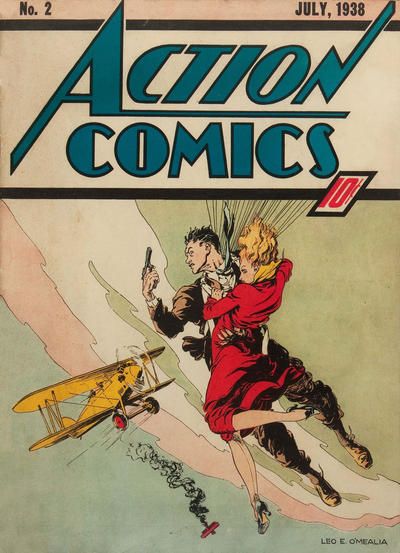
So yes, there are unquestionably some rough edges. But between the striking costume, eye-catching displays of strength, and Joe Shuster’s beautiful artwork, which was truly superior to a lot of his contemporaries, I think we can see in this story why the idea of Superman — and superheroes — caught on. And I, for one, am certainly glad they did.
Even if Traumatized Cover Man probably isn’t. Sorry, Traumatized Cover Man.













